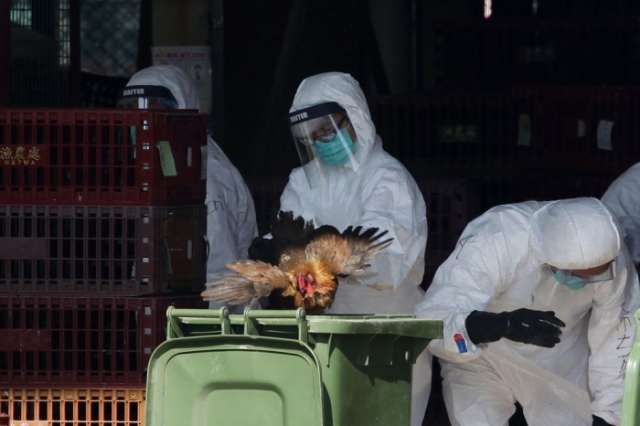On paper, horrific. Of 1,562 laboratory-confirmed cases, 569, or 36 percent, have been fatal. That compares with HN51’s 453 deaths globally since 2003. But some researchers think those reported H7N9 cases represent just a tiny — albeit much sicker — subset of the infected population. A 2014 study in Guangzhou estimated the number of cases there to be 64,000, with 3.6 deaths for every 10,000 people infected. That would make H7N9 far less severe than the reported cases suggest, though far more widespread.
2. What happened in China over the past 12 months?
H7N9 mutated to become deadly for chickens. It morphed to evade vaccines. It caused almost as many infections in people as in the previous four years combined. And its geographic spread widened, with infections in humans and poultry reported in most areas of China, including provinces bordering Vietnam and Laos. That raises the chances of the virus spreading to other countries.
3. How does H7N9 compare with previous viruses?
Menacingly, it can invade human cells in the upper and lower respiratory tract, whereas H5N1 is better suited only to the difficult-to-reach lower part. Researchers say hospitalized cases cost significantly more to treat than for seasonal flu or SARS patients. In the first few months alone of the initial outbreak in 2013, H7N9 caused an estimated $6.5 billion in economic losses.
4. What are the chances of catching H7N9?
The current risk to public health is deemed to be low. While some people may have caught H7N9 from an infected person, contact with poultry or live-bird markets is responsible in most cases. There is no evidence yet of sustained human-to-human transmission. As well as in mainland China, infections have been detected in Hong Kong, Macau and among travelers who had been in the mainland. At least 29 cases were people who went on to Malaysia, Canada, Hong Kong, Macau or Taiwan. The virus could also potentially spread beyond China’s borders through the trade in poultry or via migratory birds.
5. Why is it a pandemic threat?
The H7N9 strain in China ranks as the most likely to cause a pandemic among non-human viruses, according to the Centers for Disease Control and Prevention, which assigns a “moderate to high” risk to the strain. The more H7N9 circulates, the greater the chance it will infect people, raising the likelihood the virus will adapt to humans and disperse through coughing and sneezing. With little if any immunity among people, the potential for a pandemic is evident. On the plus side, while laboratory studies on ferrets show H7N9 can be caught through direct contact, transmission is less efficient via airborne exposure. And researchers are working on vaccines.
6. Can infections in humans be treated?
Drugs known as neuraminidase inhibitors — including Roche Holding AG’s Tamiflu and GlaxoSmithKline Plc’s Relenza — are recommended. Problem is, about 7 to 9 percent of viruses analyzed have known or suspected markers for reduced susceptibility to one or more of these drugs. Adding to the challenge, some H7N9 viruses morphed in the last epidemic to create genetically distinct groups: a so-called Pearl River Delta lineage and a Yangtze River Delta lineage. Viruses in the latter group trigger different antibodies than in previous epidemics, probably making stockpiles of existing vaccines ineffective.
7. Why is H7N9 now killing poultry?
Highly pathogenic H7N9 viruses were first detected in November and are now found in a dozen Chinese provinces. Chickens dying from the more potent strains may be laden with more viral particles, potentially increasing the risk of infection to anyone handling them. Studies show people who have caught such strains develop a severe infection, though there’s no evidence they’re more transmissible or lethal than low-pathogenic strains. The fact that fowl are dying from H7N9 at least makes outbreaks easier to control. Viruses with few symptoms often go undetected — at least until people are infected.
8. What is China doing about it?
A lot. Premier Li Keqiang escalated control measures after convening a meeting in February, ordering provincial officials in affected areas to close live poultry markets. More than 1 million infected or susceptible fowl had already been culled. The Ministry of Agriculture is testing a program of free poultry vaccinations. The government is promoting large-scale farming and centralized slaughtering while improving poultry transportation and storage at markets. Doctors are being trained in screening and early diagnosis of infections as well as treatment of critically ill patients. And consumers are being advised to buy chilled, frozen chicken instead of freshly prepared products from markets — and to thoroughly cook the meat.
The original article was published in the Bloomberg.
More about: #virus
















































